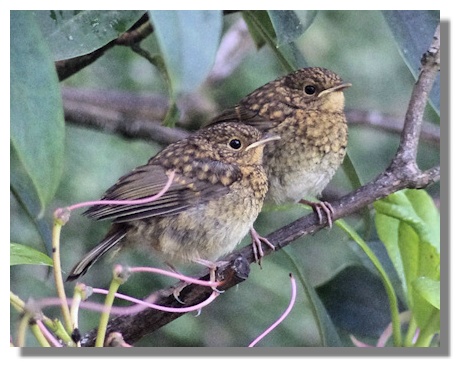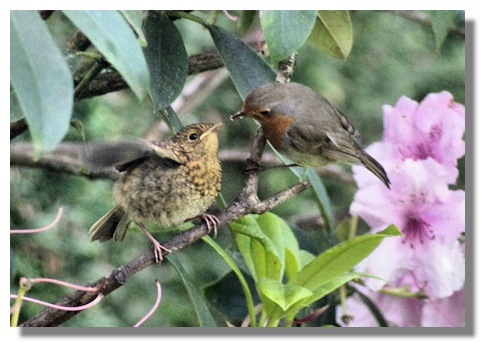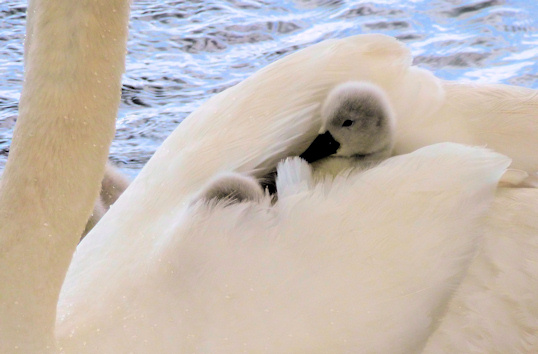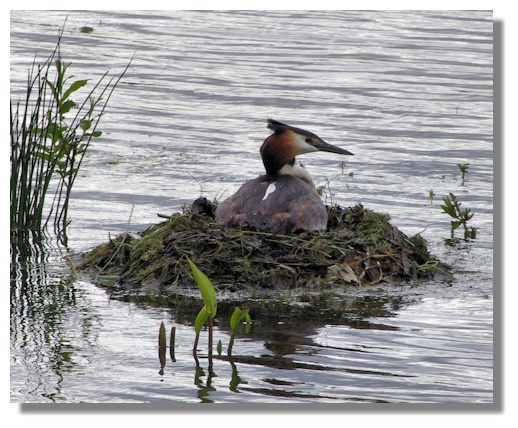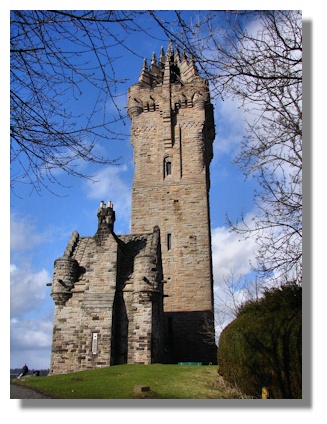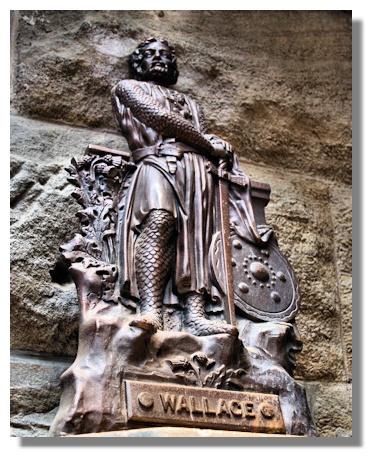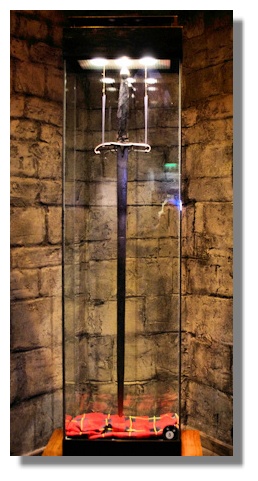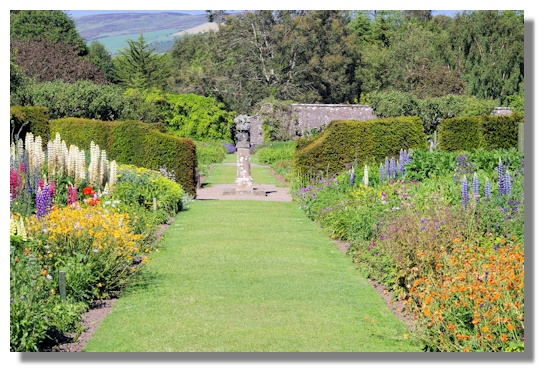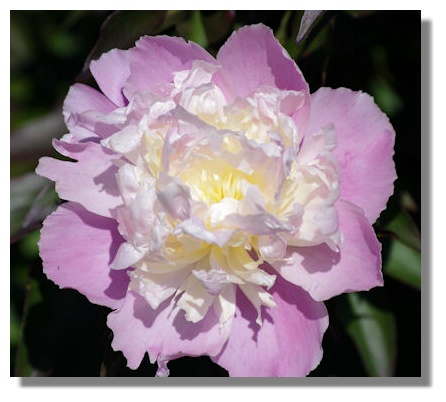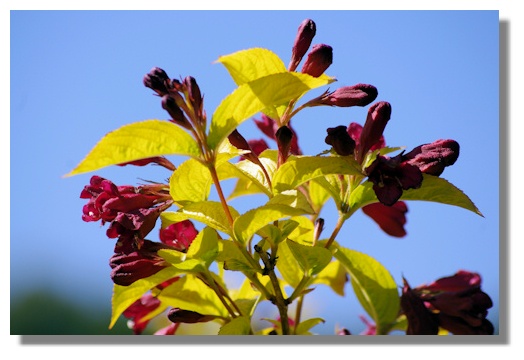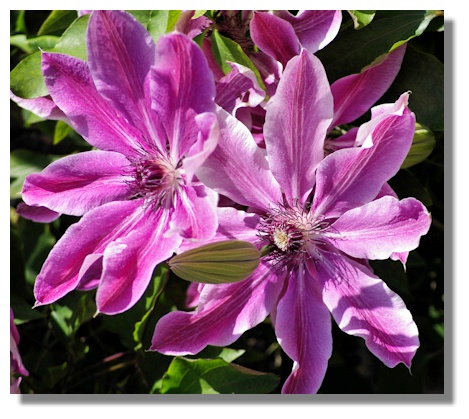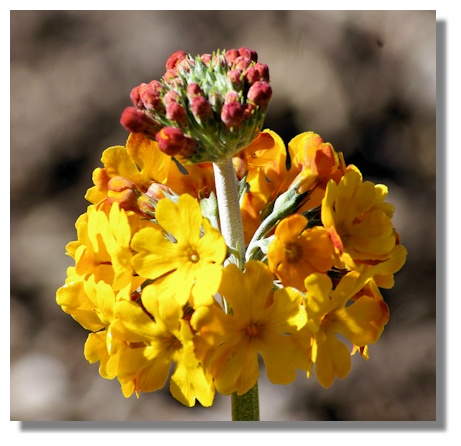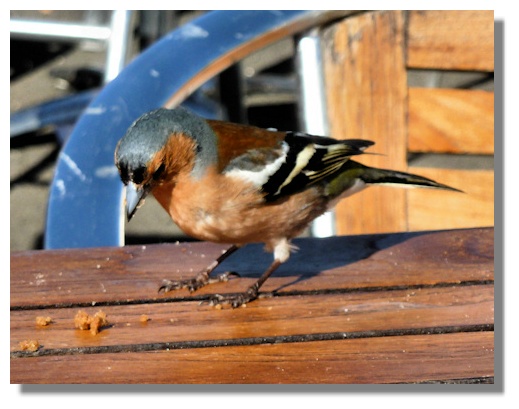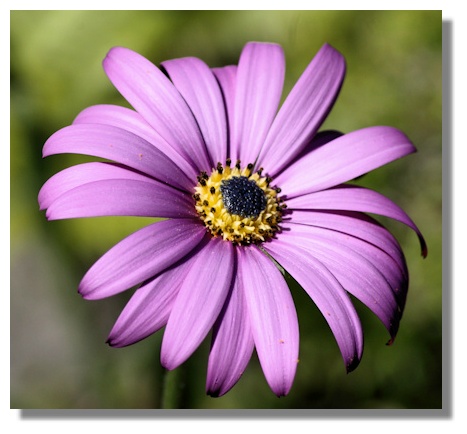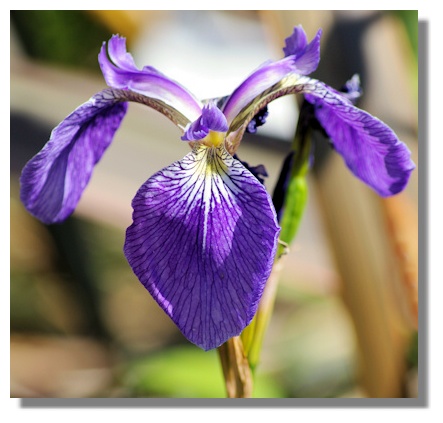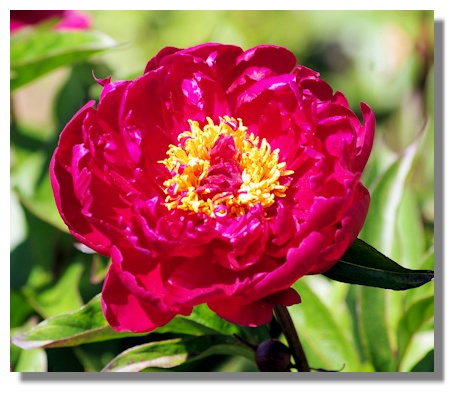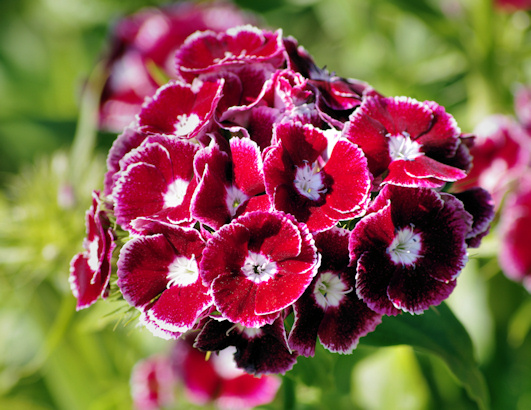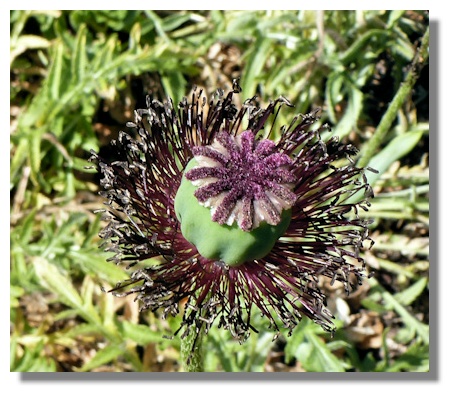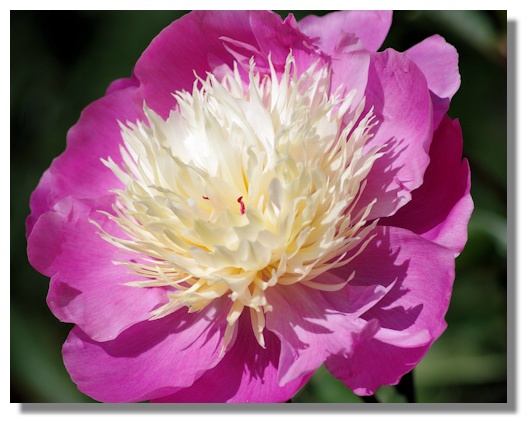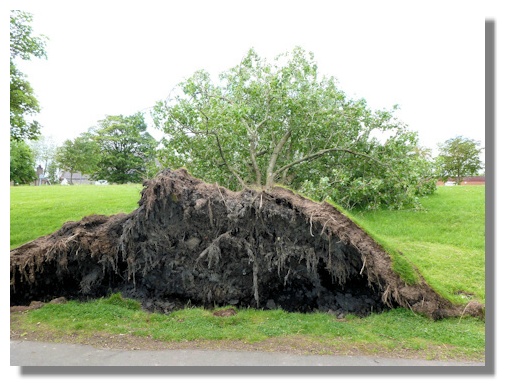Scottie's Monthly Photo Diary
- First Half of June 2011
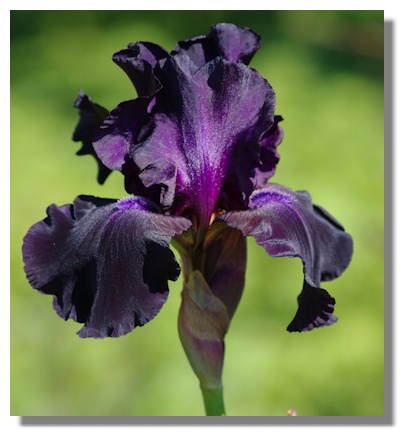
Iris in Walled Garden at Culzean Castle Country Park
Background
I never go anywhere in Scotland without my camera and I take photographs wherever I go. Sometimes I go somewhere specifically to take photographs with a view to adding another page to the Rampant Scotland site. On other occasions I just see something that makes an attractive picture or else it's another graphic to add to the library to perhaps use on a future occasion. This is a selection of the best photographs I took in the first half of June 2011 with a commentary on each one. It thus forms a pictorial diary of my travels during the month which can be shared by everyone!
Next Generation
This is a busy time of year when many of the birds and animals produce their offspring and the parents are kept busy feeding them till they are able to look after themselves. These are two young robins in my own garden, look fluffy and vulnerable and have speckled chests instead of the adult red breasts. The chicks start flying around two weeks after hatching and continue to be fed by the parents but become independent after just a couple of weeks. Which is just as well as the parents may well go off to have another brood to hatch and rear.
Both robin parents feed their young chicks but if the female starts another brood, the male will continue to feed the youngsters - until the next youngsters hatch! It was hard to watch the young robins in the days after this picture was taken fluttering their wings, hoping to be fed by the parents - and being ignored. But so far they have survived, pecking up scraps that fall from the bird feeders on the branches above them. Once they have learned their advanced flying skills they will no doubt, like their parents, manage to get through the bars surrounding the peanut nibbles (designed to keep out squirrels). Putting food on the ground doesn't really work as the local pigeons just swoop down and hoover it all up!
The red deer herd at Culzean Castle Country Park usually manages to produce more than ten fawns each year but this was the only one to be seen during this visit. The dominant red deer stag in the herd is a very light colour and passes that on to many of his offspring!
Having seen a family of cygnets at Drumpellier Country Park the day before, we were alarmed to see that two were missing the next day as they headed towards us. We feared that predators had been at work - but were relieved and delighted when two small heads popped up from the back of the mother swan! Clearly there was not room for all seven cygnets to get carried on the mother's back.
The Great Crested Grebes are still incubating their eggs - which takes 28 days. Unlike swans, where the female alone sits for 36 days, the grebes share the incubation and both will even occasionally leave the nest after covering the egg with leaves. Surprisingly, this grebe on Hogganfield Loch in Glasgow was sitting alone on the nest and there was no sign of its mate. We will watch developments with interest. Young grebes are the noisiest chicks I've ever heard, cheeping loudly to encourage their parents to catch a fish for them!
Wallace Monument
To be honest, this picture of the Wallace Monument near Stirling wasn't taken this year. I had gone along on a visit to take some more pictures of the sculptures inside the monument with a camera that had better low-light capabilities than previous ones. But it was a dull, showery day and I didn't take any external shots - this picture of the monument was taken a few years ago with some blue skies and sunshine. I've sometimes been asked why the sun is shining so often in my pictures and of course the answer is that I tend to go to places when the weather forecast is predicting suitable weather!
I had not previously seen this striking sculpture of William Wallace to whom the building is dedicated. It's located high on a side wall in the reception area of the monument - it surely deserves a more prominent position!
This 71.5 inch long broadsword, attributed to national hero Sir William Wallace, has been displayed in the Wallace Monument since 1888. Little is known about the origins of the sword for it carries no maker's mark, but the quality of the metal used for the blade suggests that it may have been forged in Scotland (unlike other swords of the period which were often Flemish or German in origin). King James IV ordered the sword to be rehilted in 1505, so that it would be more fitting to Scotland's National Hero. The size of the sword indicates that Sir William Wallace must have been at least six feet six inches tall. In 2005, the sword was taken to New York to be displayed in Grand Central Station as part of the Tartan Day celebrations that year.
The "Hall of the Heroes" is a room within the Wallace Monument which contains busts of sixteen well known Scots. Since a number of these have been presented by individuals and organisations and reflect 19th and early 20th century views, the entire selection is not perhaps the "top 16" on everyone's list. Of Course, King Robert the Bruce would be in everyone's "top 16" list and in addition to a bust of the monarch, there is this stained glass window as well.
Another obvious person to be included in a Scottish "Hall of Fame" is the national poet Robert Burns. You can learn more about the Wallace Monument and the Hall of the Heroes on Places to Visit - Wallace Monument
Culzean Castle Country Park
Although Culzean Castle Country Park is worth visiting at most times of the year, it really comes into its own in the summer months. The walled garden, in particular, is beginning to develop large patches of colour in the herbaceous borders and there is always something striking in the special areas running round beside the walls surrounding the garden. The day of this visit was 3rd June and this turned out to be the warmest day of the year, so far, with temperatures reaching 73F. If you are currently sweltering in over 90F, don't laugh, but a temperature range of 70-80F is nearly the best that we can hope for in summer in Scotland. It rarely gets into the 80/90F in Scotland - although highest recorded temperature in Scotland was 32.9C (89.6F) at Greycrook (Scottish Borders) on 9 August, 2003.
The gardeners at Culzean have planted a bed with rows of different types of iris - this rich purple one was particularly striking. Iris takes its name from the Greek word for a rainbow, referring to the wide variety of flower colours found among the many species. Culzean manages to show off many wonderful examples.
Another plant which appears each year at Culzean is the Paeony. There are a number of different varieties populating a border in the garden and each one seems to try to outshine the other! The flowers on the large bushes are often very fragrant. The paeony is named after Paeon, the Greek god of medicine and healing.
Weigela is a shrub that grows to 3-15 feet (1-5 metres) tall. It originated in eastern Asia and is named after the German scientist Christian Ehrenfried Weigel. This particular variety is an unusual dark red. As you can see the skies were particularly clear that day.
This is a particularly popular variety of Clematis called 'Nelly Moser'. It is a large-flowering form with flowers around six inches (12–15 cm) in diameter, making a particularly attractive display as they climb up a wall or trellis. They grow best when their roots are shaded but their tops are in full sun.
Tall, stately Candelabra Primula flower for quite a long time, with new flowers emerging at the top of the stem as the ones below begin to wither. They prefer damp growing conditions in partial shade. This variety has upright spikes of crimson buds which fade to apricot as the flowers emerge.
It was good to see that the chaffinches at Culzean are just as bold as ever - coming down to the tables to collect any crumbs even with a camera only a few feet away. This table was at the Stables coffee shop (though on such a warm day, a cold drink was the best option as far as I was concerned). The tables outside overlook the sea and part of the coastline near Culzean, making it an idyllic setting.
Osteospermum is one of the smaller groups of the sunflower family and it's a reliable hardy perennial. It also known by several common names including African Daisy, South African Daisy, Cape Daisy and Blue-eyed Daisy. It's a great plant for any garden as it keeps sending up flowers for months on end throughout the summer.
Here's a picture of another variety of iris in the walled garden at Culzean. Known as Blood Iris (Iris sanguinea), its graceful blue flowers are held on tall strong stems and it starts blooming in May. It can eventually make a large clump of plants, with many flower stems.
Here's another variety of paeony from that border which is packed with a large number of them, interspersed with the towering large thistle, known as onopordum.
Dianthus barbatus (Sweet William) is a native of the mountains of southern Europe. The individual flowers (around an inch (2–3 cm) in diameter are produced in a dense cluster of up to 30 at the top of the stems and they have a spicy, clove-like scent. According to Wikipedia, an English botanist John Gerard referred to Dianthus barbatus as "Sweete Williams" in his garden catalogue of 1596. Since that was 150 years before Culloden, the story that Sweet William honours the eighteenth century Prince William, Duke of Cumberland is questionable.
This odd looking picture is of a poppy - without its petals!
Paeonia lactiflora 'Bowl of Beauty' certainly lives up to its name, with large, rose-pink double flowers and a creamy-white fringed centre.
Postscript
Although Scotland is not subjected to tornadoes and hurricanes, it can get battered by strong gale-force westerly winds. But these are more usually associated with autumn and winter than summer time. So there was some surprise on 23rd May when gales with winds gusting at over 80mph swept in across central Scotland from the Atlantic. With all the leaves already sprouted and creating a large area where the force of the wind could have an impact, it resulted in many trees being blown down and many are lying where they fell. This one is in the parkland at Hogganfield Loch in Glasgow. May this year was also the wettest in Scotland in a series that began in 1910, with over 250% of the average rainfall recorded. Meantime, 400 miles further south, in Essex and Kent in England, it was the driest May recorded for several hundred years and an official drought has now been declared there.
If you want to read the other Diary entries going back to 2009, there is an Index page.
